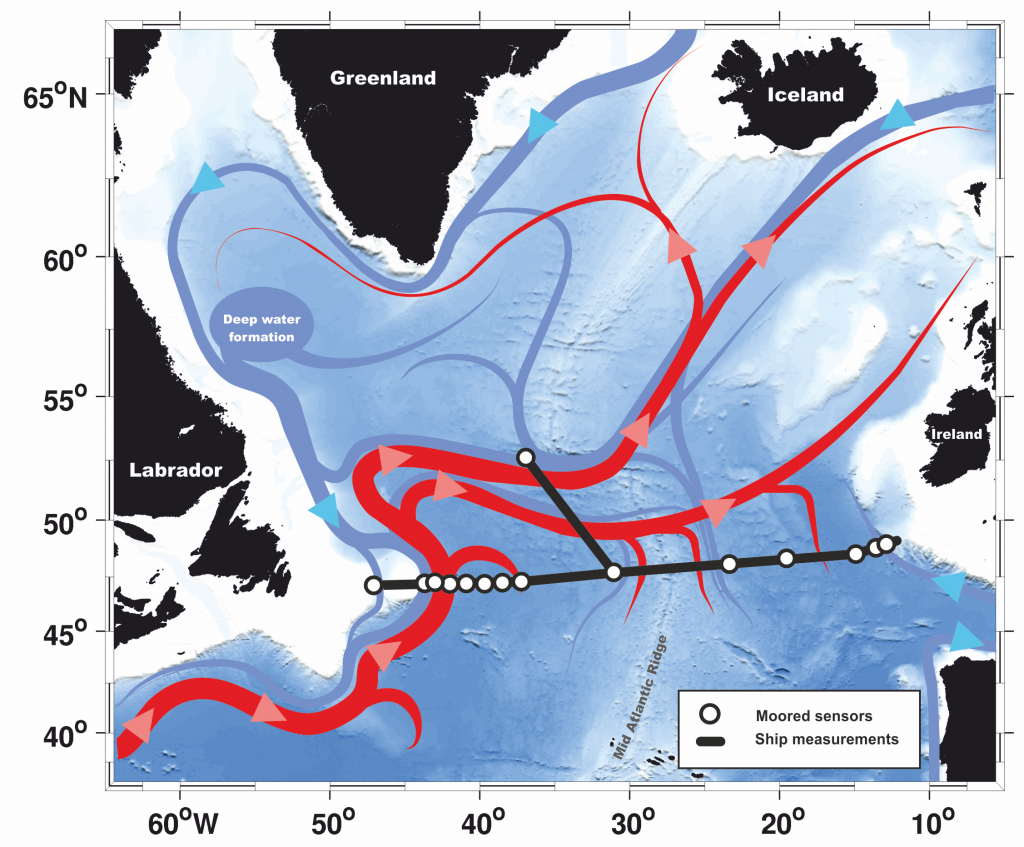The Atlantic Meridional Overturning Circulation (AMOC) transports warm and salty water from the tropics to the North Atlantic and thereby determines the mild climate in Northern Europe. Climate models show a weakening of this circulation in the future with far-reaching consequences for the climate and sea level. To determine if the circulation has already changed, and to have a basis to detect future changes, the strength of the circulation must be quantified at key points and the natural variability must be determined. We measure the circulation at the junction between the subpolar and the subtropical Atlantic along 47°N. The data acquired in this project forward the understanding of processes contributing to climate variability and constitute an important reference to validate and improve model simulations.
Objectives
- Quantification of the strength of the circulation in the subpolar North Atlantic at 47°N
- Investigation of the processes contributing to the variability of the circulation
- Comparison of the results with observations conducted south and north (WP2.2 in particular) of our observatory in national and international research efforts to understand changes in the entire circulation system
Methods
- Data from sensors moored at the ocean floor (current velocity, temperature, salinity, sea surface height)
- Satellite data (sea surface height)
- Data from the Argo program (temperature, salinity)
Ship based measurements (current velocity, temperature, salinity, oxygen) - High resolution ocean model VIKING20X in cooperation with WP3.1

PIs
Monika Rhein, MARUM-IUP, Universität Bremen
Dagmar Kieke, MARUM-IUP, Universität Bremen
Contributing scientists
Birgit Klein, BSH, Hamburg
Holger Klein, BSH,Hamburg
Manuela Köllner, BSH, Hamburg
Martin Moritz, BSH, Hamburg
Team
Christian Mertens, MARUM-IUP, Universität Bremen
Linn Sanguineti, MARUM-IUP, Universität Bremen
